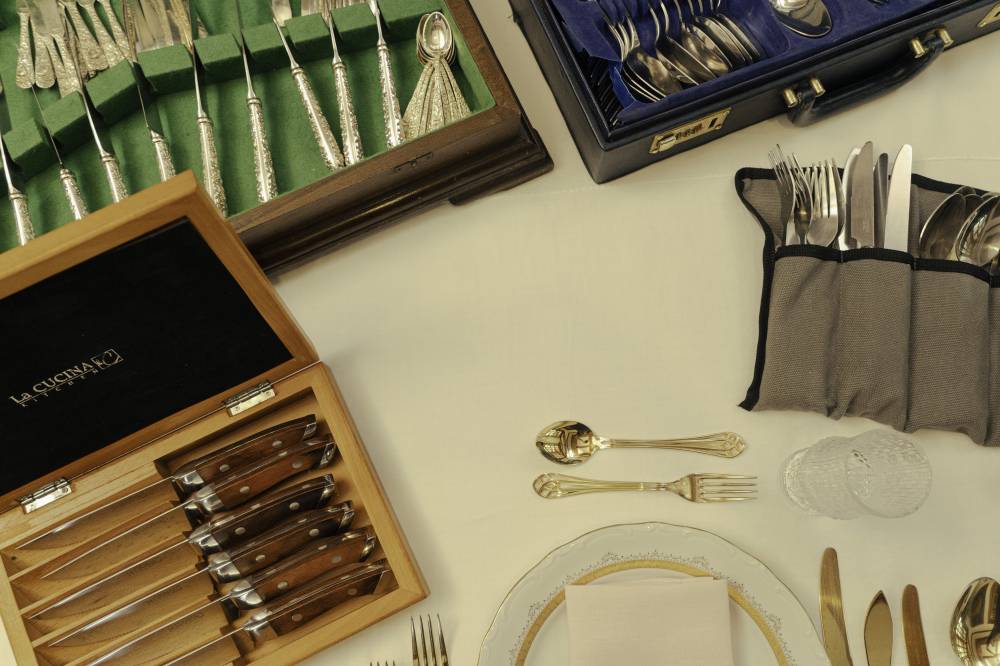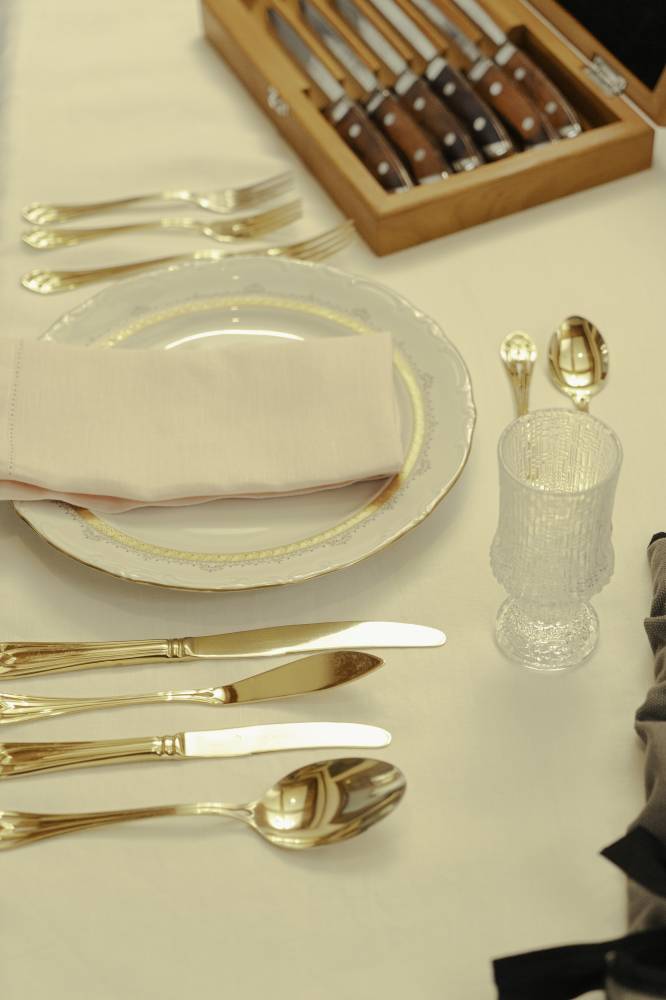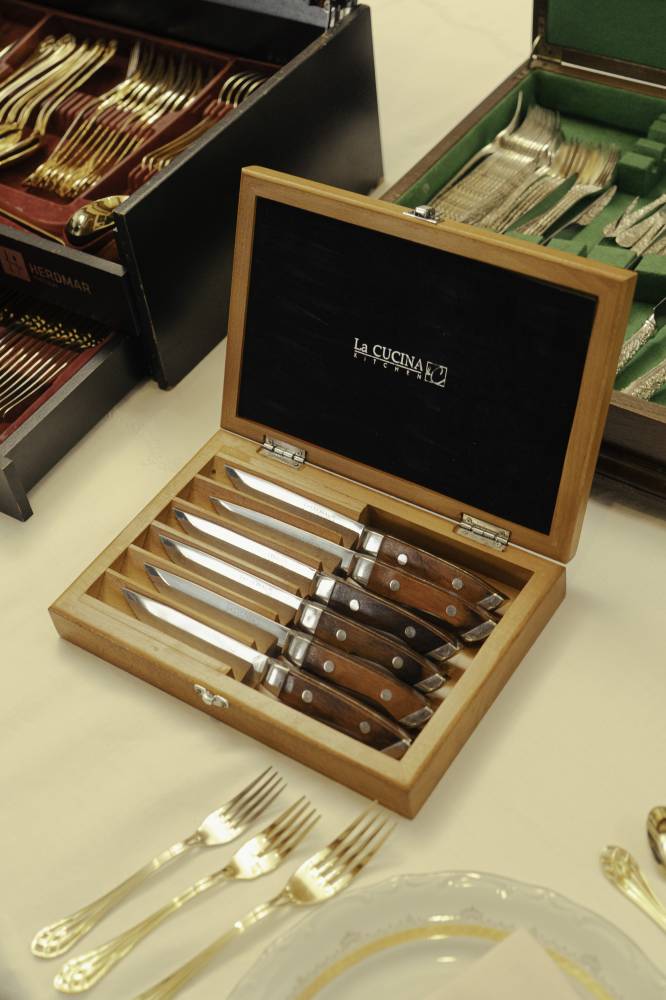‘Tis the season and reason to set the table

The holidays are upon us. A time when kitchens come alive, dining rooms glow a little warmer, and the table once again becomes the heart of the home. Whether it is a reunion with old friends, a family lunch that stretches into the afternoon, or a quiet dinner that turns into laughter, the season reminds us of one simple truth: The table is where we gather, share, and belong.
Before the first dish is served or the wine is poured, there is beauty in the ritual of setting the table—the quiet choreography that signals care. Each layer, each cutlery, and each fold of linen contributes to the mood, reflecting not only your style but also the intention behind your hospitality.
Where it all begins
It all begins with a clean surface—the dining table, the foundation of any good meal. Then comes a simple choice: placemats or a tablecloth. Once decided, everything else follows. You can layer textures, play with color, or keep things crisp and minimal. Whether you are hosting family, friends, or something in between, the table becomes your canvas—a reflection of both taste and thoughtfulness.
If you decide to use a tablecloth, elevate it a little—a touch of effort never goes unnoticed. The first layer is the mouleton, a soft, padded underlay that cushions plates and glasses while protecting the table’s finish from heat, scratches, and spills. It also softens the sound of cutlery—a subtle detail that makes the dining experience feel calm and composed.
Next comes the skirt, the second layer that drapes just below the top cloth. While optional, it adds volume and fullness, allowing your tablecloth to fall gracefully. Whether you use one depends on your storage space and personal aesthetic, but it’s a small gesture that adds quiet luxury.
Finally, the tablecloth—the most visible layer—sets the tone. For the holidays, crisp white or ivory linen always feels timeless, but soft neutrals and muted hues bring a sense of ease. A richly embroidered or woven cloth instantly adds festivity.

The tools of the table
Once the canvas is set, it’s time for the table’s adornments—the tableware. It tells a quiet story about culture, craft, taste, and how you like to host. The three common types are stainless steel, sterling silver, and gold-plated—each bringing its own character.
Stainless steel is durable and versatile, perfect for daily meals and casual hosting. Its sleek sheen complements both modern and traditional settings. Sterling silver, with its quiet weight and patina, speaks of tradition and inheritance. Polishing it before guests arrive is almost ceremonial—a way of bringing family history to the table.
Gold-plated cutlery adds a celebratory touch, its warm glow reflecting candlelight beautifully—especially fitting for Christmas or New Year gatherings. This was the first set my husband and I bought when we were newly married, back when we began hosting more gatherings at home. From that choice, I am reminded of why investing in quality, timeless pieces matters. They outlast trends and become part of your home’s narrative.
Cutlery design, too, reflects eras and influences. French sets tend to have rounded bowls and delicate lines. Monogrammed silver and bespoke pieces once spoke of refinement and family tradition. In a classic French table setting, the cutlery is placed facing down to proudly display the maker’s mark or monogram engraved on the back. In Filipino homes, a spoon beside the fork feels instinctive—a nod to our rice-based meals and our innate sense of hospitality.
There’s quiet pleasure in using the right cutlery. A reminder that tools, when chosen well, shape the way we experience food. A steak knife, for instance, transforms even the tenderest cut of beef into something almost ceremonial.
Setting the stage
When setting the table, it helps to begin with the menu. Knowing what will be served determines which cutlery belongs. From there, it is always about symmetry: the visual harmony that immediately signals care.
A basic table setting is easy to remember—the dinner plate sits at the center, forks on the left, and knives and spoons on the right, with the knife’s blade always facing inward. If soup is on the menu, place the soup spoon to the outer right, as it is used first. A drinking or wine glass rests just above the knife nearest the plate. When unsure of which cutlery to use, remember the golden rule: eat from the outside in.
When balancing your tablescape with the food you are serving, think harmony rather than excess. If the dishes are beautifully plated and visually striking, let them shine against a simple, clean, and minimalist setting. But if you are serving traditional comfort food—hearty, soulful, and perhaps less photogenic—layering textures and adding color through patterns, flowers, or vases can create a richer visual feast.
In the end, it’s your table, your style, and what you want your guests to experience.

Beyond function
Table setting is part etiquette, part expression. It reflects your approach to hospitality. Add a few touches that make the table yours. Something that brings a gentle touch of color and charm, like a fruit or gourd of the season for color, freshly cut foliage for texture, handwritten place cards that make guests feel thought of, and small votive candles casting a glow that flatters faces and makes for the best photos.
In Filipino homes, generosity extends beyond the meal itself—we make sure everyone leaves full, often packing leftovers for guests to bring home. It’s a simple act that carries the warmth of the gathering, long after the plates are cleared.
A thought for the season
As the year draws to a close, our tables will host stories, laughter, and the occasional spill of red wine. There will be reunions and reconciliations, hearty meals and quiet ones, and moments when the clinking of glasses feels like gratitude itself.
So whether you are setting the table for two or 20, take a moment to enjoy the process. The smoothing of linen, the arranging of cutlery, the soft gleam of candles. These details, though small, speak volumes. Because when we set the table with intention, we are not just preparing to eat—we are preparing to connect.
And that, after all, is what this season is truly about.
A place for everything: Table touches for a thoughtful setting
1. Begin with a clean slate.
A spotless surface and crisp linens set the tone.
2. Layer with intention.
Begin with the mouleton, add a skirt for fullness (optional), then your tablecloth—the stage for everything that follows. Candles, oshibori (a Japanese wet hand towel), and simple centerpieces complete the mood.
3. Set and serve with purpose.
Match your table to the menu and style of service—family-style for sharing, buffet for ease, plated for polish. China at the center. Napkin on the left or center. Forks on the left, knives and spoons on the right, and remember: eat from the outside in.
4. Choose your character pieces.
Stainless steel brings everyday elegance, silver adds heirloom charm, and gold lends festive glow. Wood handles add warmth and character.
5. Add the finishing touch.
A handwritten place card, soft music, or the flicker of candlelight make guests feel seen and at home. And remember—a mismatched plate or a slightly uneven fold adds charm. The goal is not perfection, but presence.

















